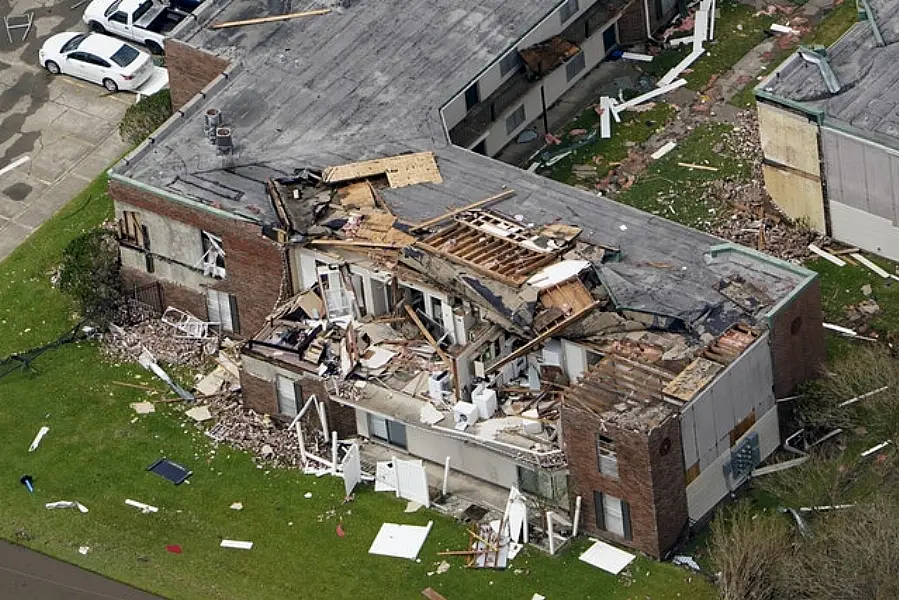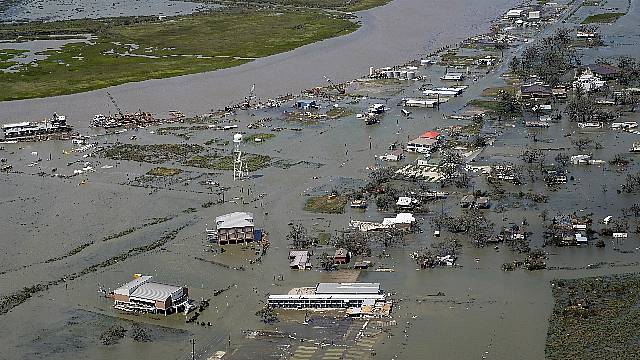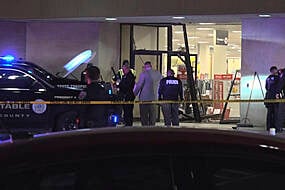A full assessment of the damage wrought by the Category 4 Hurricane Laura was likely to take days.
But despite a trail of demolished buildings, entire neighbourhoods left in ruins and more than 875,000 people without power, a sense of relief prevailed that Laura was not the annihilating menace forecasters had feared.
“It is clear that we did not sustain and suffer the absolute, catastrophic damage that we thought was likely,” Louisiana Governor John Bel Edwards said. “But we we have sustained a tremendous amount of damage.”

Drone video showed water surrounding homes with much of their roofs peeled away.
The deaths included a 14-year-old girl and a 68-year-old man who died when trees fell on their homes in Louisiana, as well as a 24-year-old man who died of carbon monoxide poisoning from a generator inside his residence.
Another man drowned in a boat that sank during the storm, authorities said.
No deaths had been confirmed in Texas, which Republican Governor Greg Abbott said would amount to “a miracle”. President Donald Trump said planned to visit the Gulf Coast this weekend to tour the damage.
More than 580,000 coastal residents were ordered to join the largest evacuation since the pandemic began and many did, filling hotels and sleeping in cars. Although not everyone fled from the coast, officials credited those who did leave for minimising the loss of life.
The hurricane’s top wind speed of 150 mph put it among the most powerful systems on record in the US Not until 11 hours after landfall did Laura finally weaken into a tropical storm as it churned toward Arkansas.
“It looks like 1,000 tornadoes went through here. It’s just destruction everywhere,” said Brett Geymann, who rode out the storm with three family members in Moss Bluff, near Lake Charles. He described Laura passing over his house with the roar of a jet engine at around 2am.

“There are houses that are totally gone. They were there yesterday, but now gone,” he said.
Daybreak offered the first glimpse of the destruction as a massive plume of smoke began rising over Lake Charles, where authorities responded to a chlorine leak at a chemical plant.
Police said the leak was at a facility run by Biolab, which manufactures chemicals used in household cleaners.
Nearby residents were told to close their doors and windows and turn off air conditioners.

Elsewhere, initial reports offered hope that the destruction might be somewhat less than originally feared. Wind and rain blew too hard for authorities to check for survivors in some hard-hit places.
Hundreds of thousands of people were ordered to evacuate ahead of the hurricane, but not everyone fled from the area, which was devastated by Hurricane Rita in 2005.
“There are some people still in town, and people are calling … but there ain’t no way to get to them,” Tony Guillory, president of the Calcasieu Parish Police Jury said over the phone from a Lake Charles government building that was shaking from the storm.
Mr Guillory said he hoped the stranded people could be rescued later in the day, but he feared that blocked roads, downed power lines and floodwaters could get in the way.
“We know anyone that stayed that close to the coast, we’ve got to pray for them, because looking at the storm surge, there would be little chance of survival,” Louisiana Lieutenant Governor Billy Nungesser told ABC’s Good Morning America.

More than 875,000 homes and businesses were without power in Louisiana and Texas, according to the website PowerOutage.Us, which tracks utility reports.
Forecasters had warned that the storm surge of 15 to 20 feet would be “unsurvivable” and could push 40 miles inland.
They expected “catastrophic” damage along a stretch of coast from Lake Charles to Port Arthur, Texas. Damaging winds extended outward as far as 175 miles, according to the hurricane centre.







